1. Akkawi I, Zmerly H. Osteoporosis: current concepts. Joints. 2018; 6:122–127. PMID:
30051110.

2. Pisani P, Renna MD, Conversano F, Casciaro E, Di Paola M, Quarta E, Muratore M, Casciaro S. Major osteoporotic fragility fractures: risk factor updates and societal impact. World J Orthop. 2016; 7:171–181. PMID:
27004165.

3. Sattui SE, Saag KG. Fracture mortality: associations with epidemiology and osteoporosis treatment. Nat Rev Endocrinol. 2014; 10:592–602. PMID:
25091729.

4. Ahlborg HG, Johnell O, Turner CH, Rannevik G, Karlsson MK. Bone loss and bone size after menopause. N Engl J Med. 2003; 349:327–334. PMID:
12878739.

5. Väänänen HK, Härkönen PL. Estrogen and bone metabolism. Maturitas. 1996; 23(Suppl):S65–S69. PMID:
8865143.

6. Hedlund LR, Gallagher JC. The effect of age and menopause on bone mineral density of the proximal femur. J Bone Miner Res. 1989; 4:639–642. PMID:
2816509.

7. Chen X, Anderson JJB. Isoflavones and bone: animal and human evidence of efficacy. J Musculoskelet Neuronal Interact. 2002; 2:352–359. PMID:
15758427.
8. Picherit C, Chanteranne B, Bennetau-Pelissero C, Davicco MJ, Lebecque P, Barlet JP, Coxam V. Dose-dependent bone-sparing effects of dietary isoflavones in the ovariectomised rat. Br J Nutr. 2001; 85:307–316. PMID:
11299076.

9. Kim MS, Lee YS. Effects of soy isoflavone and/or estrogen treatments on bone metabolism in ovariectomized rats. J Med Food. 2005; 8:439–445. PMID:
16379553.

10. Kim DW, Yoo KY, Lee YB, Lee KH, Sohn HS, Lee SJ, Cho KH, Shin YK, Hwang IK, Won MH, Kim DW. Soy isoflavones mitigate long-term femoral and lumbar vertebral bone loss in middle-aged ovariectomized mice. J Med Food. 2009; 12:536–541. PMID:
19627201.

11. Zheng X, Lee SK, Chun OK. Soy isoflavones and osteoporotic bone loss: a review with an emphasis on modulation of bone remodeling. J Med Food. 2016; 19:1–14. PMID:
26670451.

12. Ma DF, Qin LQ, Wang PY, Katoh R. Soy isoflavone intake inhibits bone resorption and stimulates bone formation in menopausal women: meta-analysis of randomized controlled trials. Eur J Clin Nutr. 2008; 62:155–161. PMID:
17392695.

13. Xiao Y, Zhang S, Tong H, Shi S. Comprehensive evaluation of the role of soy and isoflavone supplementation in humans and animals over the past two decades. Phytother Res. 2018; 32:384–394. PMID:
29193539.

14. Mei J, Yeung SS, Kung AW. High dietary phytoestrogen intake is associated with higher bone mineral density in postmenopausal but not premenopausal women. J Clin Endocrinol Metab. 2001; 86:5217–5221. PMID:
11701680.

15. Ma DF, Qin LQ, Wang PY, Katoh R. Soy isoflavone intake increases bone mineral density in the spine of menopausal women: meta-analysis of randomized controlled trials. Clin Nutr. 2008; 27:57–64. PMID:
18063230.

16. Taku K, Melby MK, Takebayashi J, Mizuno S, Ishimi Y, Omori T, Watanabe S. Effect of soy isoflavone extract supplements on bone mineral density in menopausal women: meta-analysis of randomized controlled trials. Asia Pac J Clin Nutr. 2010; 19:33–42. PMID:
20199985.
17. Lee H, Choue R, Lim H. Effect of soy isoflavones supplement on climacteric symptoms, bone biomarkers, and quality of life in Korean postmenopausal women: a randomized clinical trial. Nutr Res Pract. 2017; 11:223–231. PMID:
28584579.

18. Kenny AM, Mangano KM, Abourizk RH, Bruno RS, Anamani DE, Kleppinger A, Walsh SJ, Prestwood KM, Kerstetter JE. Soy proteins and isoflavones affect bone mineral density in older women: a randomized controlled trial. Am J Clin Nutr. 2009; 90:234–242. PMID:
19474141.

19. Brink E, Coxam V, Robins S, Wahala K, Cassidy A, Branca F. PHYTOS Investigators. Long-term consumption of isoflavone-enriched foods does not affect bone mineral density, bone metabolism, or hormonal status in early postmenopausal women: a randomized, double-blind, placebo controlled study. Am J Clin Nutr. 2008; 87:761–770. PMID:
18326616.

20. Kwak HS, Park SY, Kim MG, Yim CH, Yoon HK, Han KO. Marked individual variation in isoflavone metabolism after a soy challenge can modulate the skeletal effect of isoflavones in premenopausal women. J Korean Med Sci. 2009; 24:867–873. PMID:
19794985.

21. Ward WE, Fonseca D. Soy isoflavones and fatty acids: effects on bone tissue postovariectomy in mice. Mol Nutr Food Res. 2007; 51:824–831. PMID:
17604386.

22. Watkins BA, Reinwald S, Li Y, Seifert MF. Protective actions of soy isoflavones and n-3 PUFAs on bone mass in ovariectomized rats. J Nutr Biochem. 2005; 16:479–488. PMID:
16043030.

23. Simopoulos AP. Omega-3 fatty acids in inflammation and autoimmune diseases. J Am Coll Nutr. 2002; 21:495–505. PMID:
12480795.

24. Watkins BA, Li Y, Lippman HE, Seifert MF. Omega-3 polyunsaturated fatty acids and skeletal health. Exp Biol Med (Maywood). 2001; 226:485–497. PMID:
11395919.
25. Ciriminnaa R, Meneguzzob F, Delisia R, Pagliaro M. Enhancing and improving the extraction of omega-3 from fish oil. Sustain Chem Pharm. 2017; 5:54–59.
26. Goicoechea E, Brandon EFA, Blokland MH, Guillén MD. Fate in digestion
in vitro of several food components, including some toxic compounds coming from omega-3 and omega-6 lipids. Food Chem Toxicol. 2011; 49:115–124. PMID:
20937346.
27. Ismail A, Bannenberg G, Rice HB, Schutt E, MacKay D. Oxidation in EPA- and DHA-rich oils: an overview. Lipid Technol. 2016; 28:55–59.

28. Fricker G, Kromp T, Wendel A, Blume A, Zirkel J, Rebmann H, Setzer C, Quinkert RO, Martin F, Müller-Goymann C. Phospholipids and lipid-based formulations in oral drug delivery. Pharm Res. 2010; 27:1469–1486. PMID:
20411409.

29. Uchida R, Chiba H, Ishimi Y, Uehara M, Suzuki K, Kim H, Matsumoto A. Combined effects of soy isoflavone and fish oil on ovariectomy-induced bone loss in mice. J Bone Miner Metab. 2011; 29:404–413. PMID:
21069546.

30. Ihn HJ, Kim JA, Lim S, Nam SH, Hwang SH, Lim J, Kim GY, Choi YH, Jeon YJ, Lee BJ, Bae JS, Kim YH, Park EK. Fermented oyster extract prevents ovariectomy-induced bone loss and suppresses osteoclastogenesis. Nutrients. 2019; 11:1392–1403.

31. Jia L, Xu S, Liu S, Du S, Wu S, Gong J. Polymorphs of daidzein and intermolecular interaction effect on solution crystallization. CrystEngComm. 2017; 19:7146–7153.

32. Zhang Z, Huang Y, Gao F, Bu H, Gu W, Li Y. Daidzein-phospholipid complex loaded lipid nanocarriers improved oral absorption:
in vitro characteristics and
in vivo behavior in rats. Nanoscale. 2011; 3:1780–1787. PMID:
21350765.
33. Lee SH, Kim YH, Yu HJ, Cho NS, Kim TH, Kim DC, Chung CB, Hwang YI, Kim KH. Enhanced bioavailability of soy isoflavones by complexation with β-cyclodextrin in rats. Biosci Biotechnol Biochem. 2007; 71:2927–2933. PMID:
18071265.

34. Deshpande AA, Rhodes CT, Shah NH, Malick AW. Controlled-release drug delivery systems for prolonged gastric residence: an overview. Drug Dev Ind Pharm. 1996; 22:531–539.

35. Zhang Y, Na X, Zhang Y, Li L, Zhao X, Cui H. Isoflavone reduces body weight by decreasing food intake in ovariectomized rats. Ann Nutr Metab. 2009; 54:163–170. PMID:
19420908.


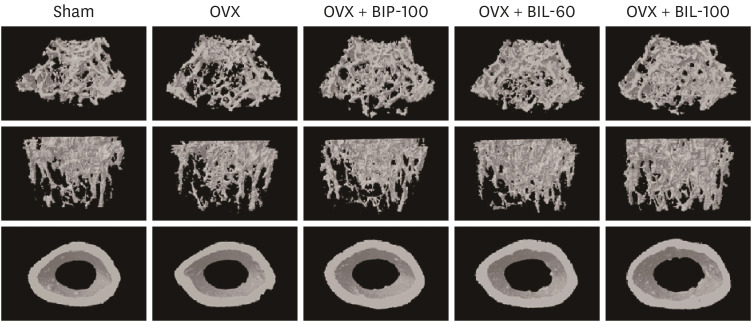





 PDF
PDF Citation
Citation Print
Print



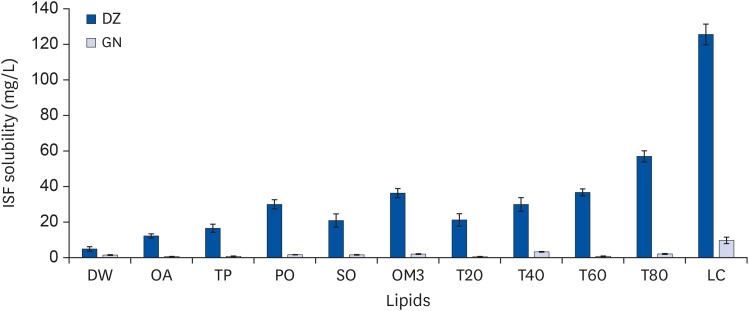
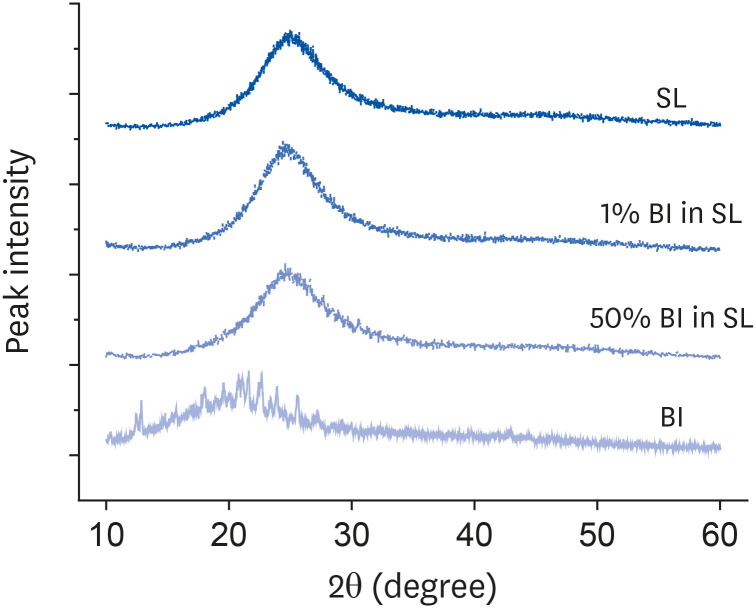
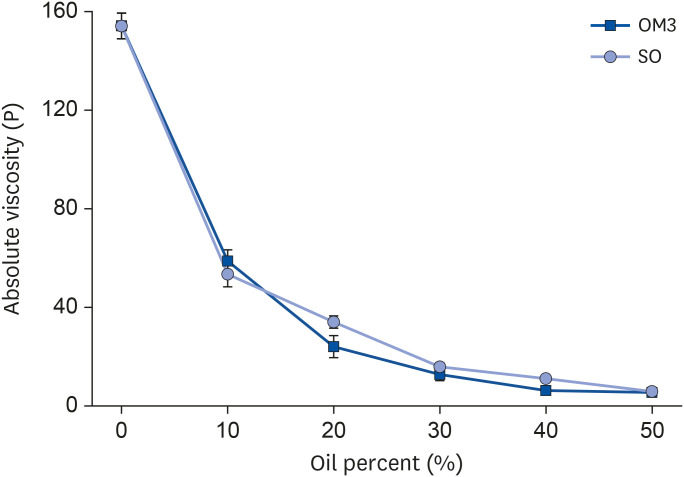
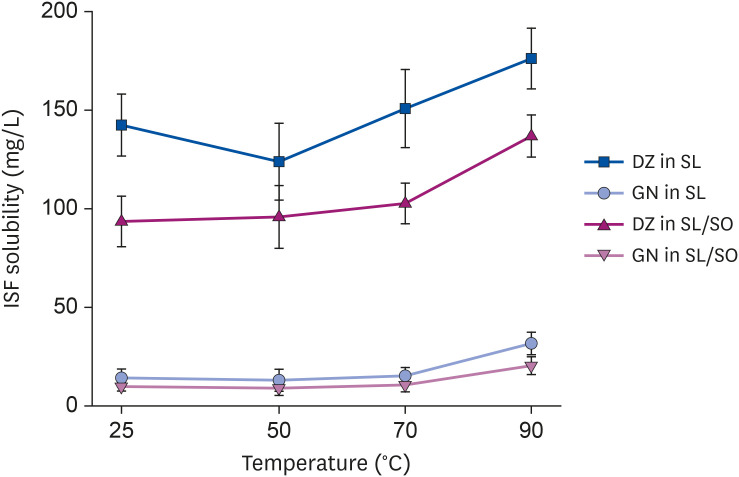
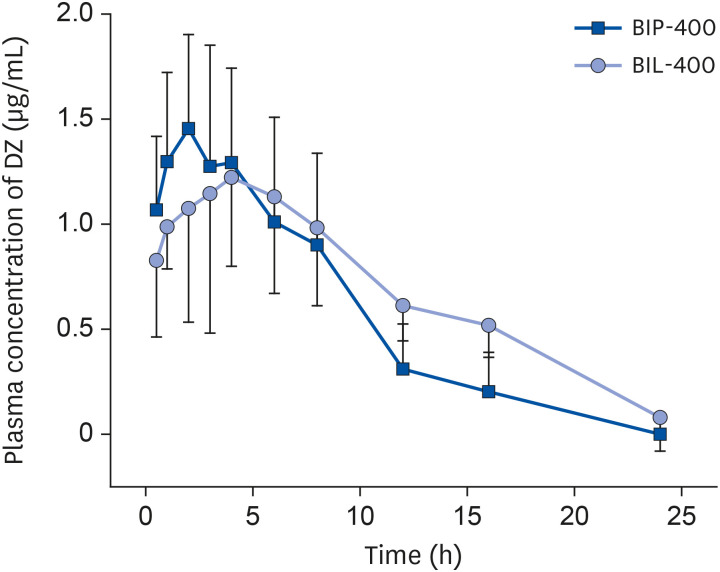
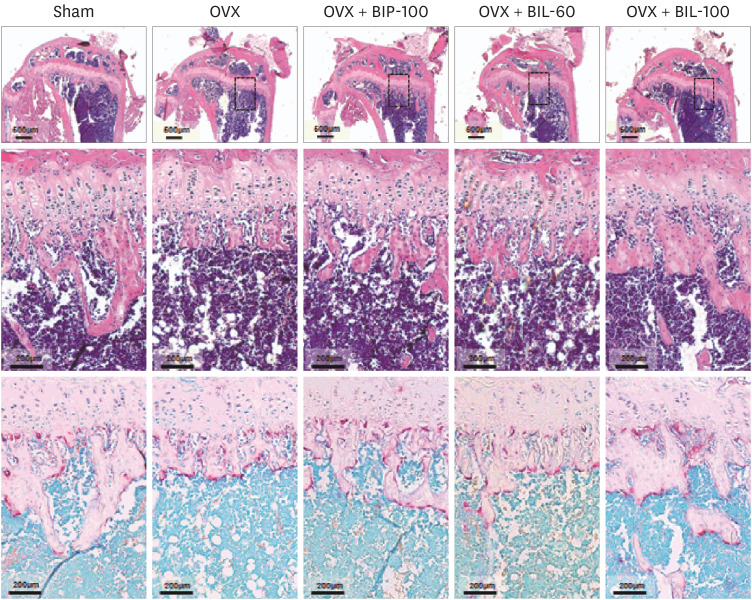
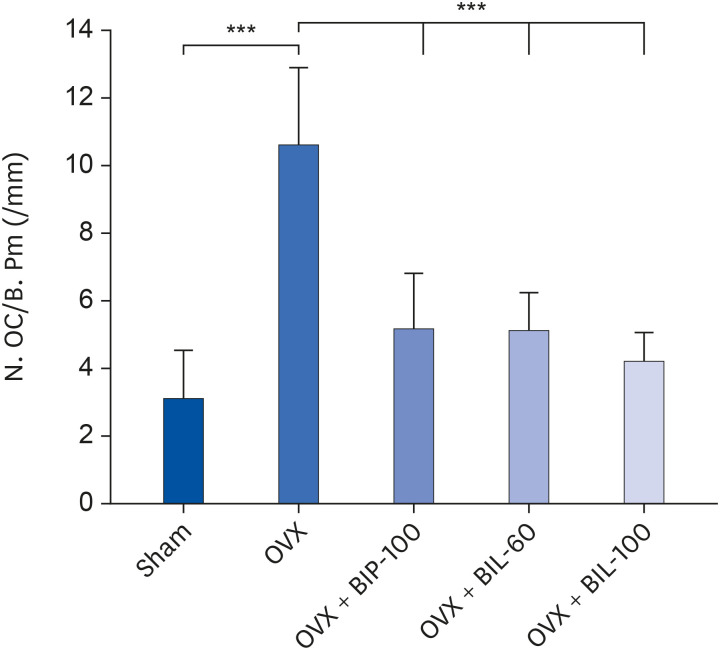
 XML Download
XML Download